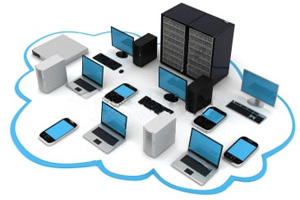-
Industry
SolutionsIndustry
SolutionsTeam with a technology partner that delivers across all industries.
Read more about industry solutions -
Software
SolutionsSoftware
SolutionsLearn how to optimise your business processes to save time and increase productivity.
Read more about software solutions -
Services
-
Products
Products
Feel confident knowing your technology will deliver reliability and longevity as you move forward.
Read more about productsMultifunctionEnhance your operational and financial performance with Toshiba's award-winning range.
Read more about multifunction Software
SoftwareSave money, better manage documents, secure critical information and improve efficiency.
Read more about software Pre-Owned MFDs
Pre-Owned MFDsQuality pre-owned A3 Multi-Function Devices (MFDs) fully refurbished by master manufacturer-trained technicians.
Read more about refurbished MFD Barcode Printer
Barcode PrinterToshiba Auto-ID, Barcode and Label printers are the perfect solution for everyday business.
Read more about barcode printer Printers
PrintersDesigned to deliver power and performance to small businesses and workgroups.
Read more about printers Interactive Flat Panels
Interactive Flat PanelsCreate inspired learning and smarter corporate collaboration
Read more about IFPs
-
Support
Support
We are here to help! Discover and access information about your Toshiba products or simply contact us for priority service.
Read more about support -
Company
Company
Toshiba is the world's most trusted provider of industry-targeted solutions that help increase the value of ideas and information.
Read more about company
The First Steps to Peace of Mind
 Toshiba Managed Technology can assist with disaster recovery.
Toshiba Managed Technology can assist with disaster recovery.When it comes to disaster in the workplace, there’s no way to know what may strike or exactly how your information technology may be impacted. However, with a thoughtful approach to disaster planning, you’ll know that you’re well-prepared should something happen to your IT infrastructure, your physical space, or both. Follow these initial steps to give yourself peace of mind, should your business encounter disaster.
Identify threats
Make a list of potential disasters that might affect your business—everything from weather catastrophes common in your area to mundane problems like power outage, hardware failure, and data loss. Starting with your highest-risk scenario, identify what assets are in danger. What is the impact of a potential loss? Let value guide your recovery plan’s development.
Predict effects to define solutions
For each potential disaster you’ve identified, how will each business area be affected? Each department will have different needs (sales, accounting, customer service, marketing, human resources) and some downed resources will be universal (email access, local network files, etc.). What accommodations need to be made to get systems up and running again?
Evaluate your downtime tolerance
How long can your business survive without IT resources? Some areas may require IT infrastructure for minute-to-minute functioning, while others can cope with impairment for hours or even days. Examine the potential impact on your services and the true cost of downtime in order to prioritize recovery solutions.
Develop solutions
Build any safety nets and redundancies necessary for your systems to function properly when disaster does strike. In this stage, an outside eye can be helpful in recommending optimal technologies to meet your unique needs. Disaster recovery technologies include backup servers and network traffic switches, uninterrupted power supplies, and disk or tape backup. Migrating functions to the cloud enable your IT to work from anywhere, should the worst happen.
Prepare employees
Make sure your employees are trained and empowered to actually carry out the recovery plan by establishing clear roles and responsibilities. Train each team member to execute their part of the plan. Use training and dry runs to ensure plans are realistic and feasible.
Disaster may strike at any time, but there’s no reason to fear being caught unprepared. Gain peace of mind by contacting us today to get started on your company’s disaster recovery plan.
